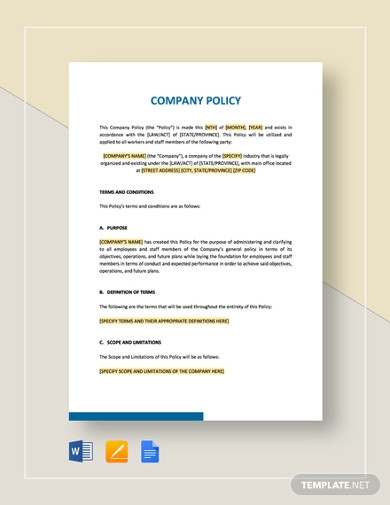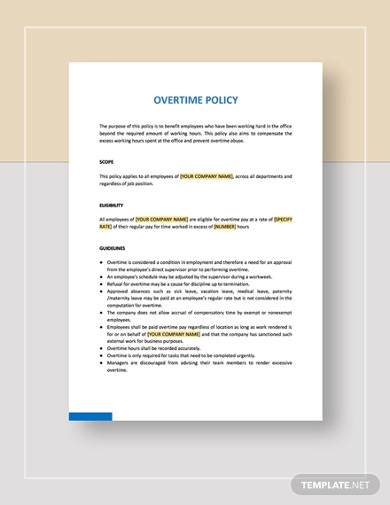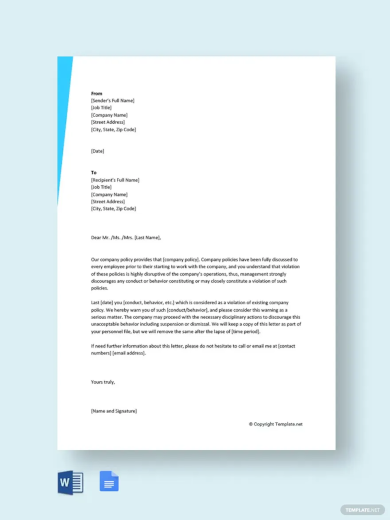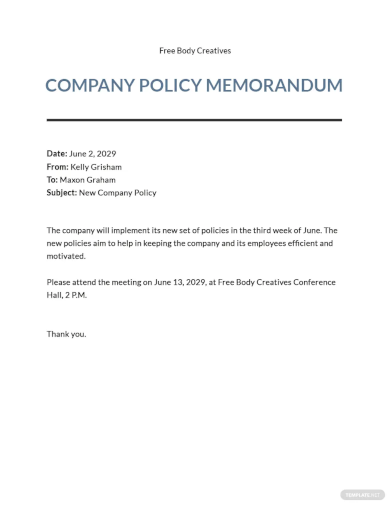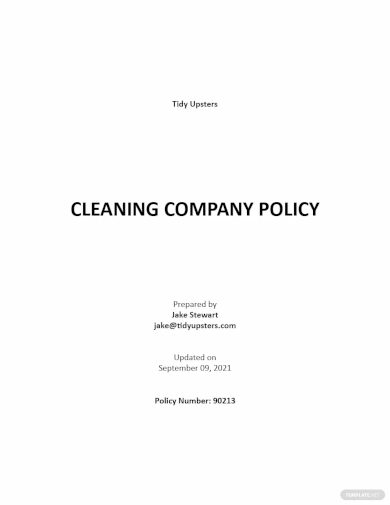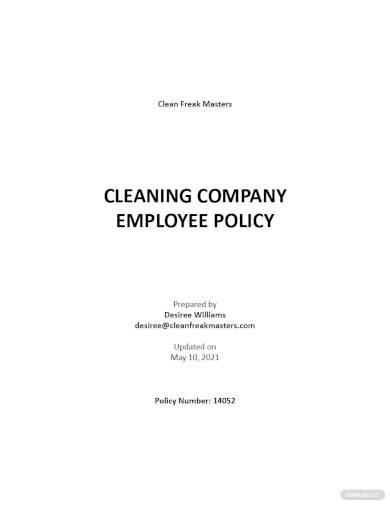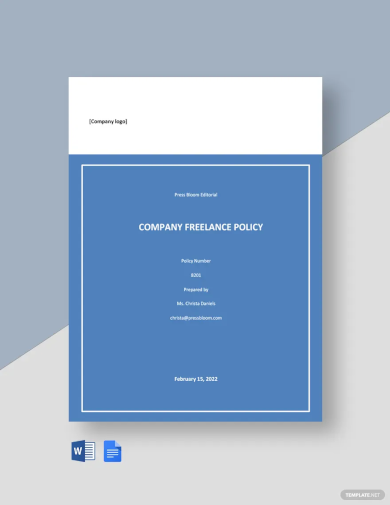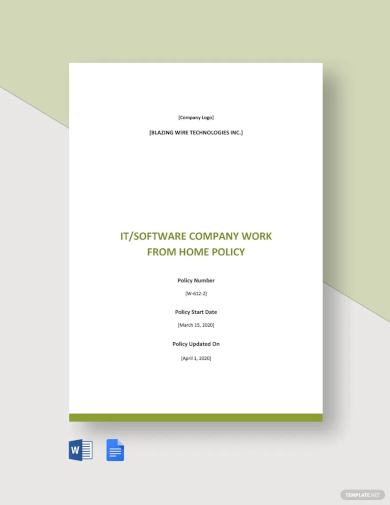21+ Authorization Policy Examples to Download
Every business, organization, and company needs its own set of rules to keep everything in order. Without order, not only will there be chaos, but nobody will get anything done. They’d be out of business sooner than anybody thinks. So where do these rules and policies come in? Well, the executives must establish the company policy at the outset so that everybody knows what to expect. To learn more about this and to get the best company policy example from our list, all you have to do is scroll on.
Company Policy Examples & Templates
1. Company Policy Template
2. Company Overtime Policy
3. Warning Letter for Violation of Company Policy Template
4. Company Policy Memo Template
5. Cleaning Company Policy Template
6. Cleaning Company Employee Policy Template
7. Simple Company Freelance Policy Template
8. Company Cyber Security Policy Template
9. IT and Software Company Work from Home Policy Template
10. Company Policies and Procedures
11. Company Policy Example
12. Company Information Technology Policy
13. Security Company Policy
14. Company Policy Travel
15. Company Whistleblower Policy
16. Employee Company Policy
17. Company Policy Sample
18. Company Seat Belt Use Policy
19. Company Equipment Sample Policy
20. Company Policy on Strategic Export Controls
21. Business Conduct Company Policy
22. Corporate Company Gift Policy
What Is a Company Policy?
This is what management sets in place for the establishment of proper rules of conduct. Not only does this handle behavioral topics, but it can also outline the numerous responsibilities of the people within the organization. The specifics tend to range anywhere between employee conduct, dress code, attendance, and areas pertaining to company privacy policy. Now that you know how important this is, it’s time to turn our focus on how to write a company policy.
Tips for Writing a Company Policy?
Writing a company policy can be tedious work. There are so many things to keep in mind and it is easy to lose track of important work matters. To make the experience easier, be sure to consider the following tips:
Tip 1: Have a Priority List
You could have a desperate need for a company social media policy right now. However, working on one will mean skipping over other important policies. So which do you do first? With a checklist on hand, you don’t have to ask yourself this question so frequently. You will also keep your efforts much more organized and efficient.
Tip 2: Use Consistent and Professional Fonts
Your policy is part of your organization and must be presented in a professional manner. As you write, you need to ensure that your use of fonts is consistent. Don’t pick one that makes your policy look anything other than professional either. Do this across the board and your employees should pick up the tone that you are going for with no issues.
Tip 3: Utilize Little or No Colors
Like the tip above, this has everything to do with professionalism. You may feel tempted to brighten up your company policy, but take note that this isn’t the time for that. Should you decide to make use of colors, remember to use very little. This is a business-related endeavor and does not require an artist’s touch.
Tip 4: Be Clear and Concise
Your policy is meant to be understood with little or no issues whatsoever. For that reason, you must be clear regarding your wording. However, that does not excuse you from writing lengthy statements in an attempt to explain everything. Doing so will serve to confuse people even more since it would no longer be very readable. So for that particular reason, be as concise as possible.
FAQs
What are the advantages of having a company policy?
The first advantage is that policies are usually incredibly specific and strict, which leaves no room for error or ambiguity. It also helps encourage employee accountability, which makes for responsible staff members. For others, it can double as a training manual of sorts.
What are the disadvantages of having a company policy?
Depending on the policy, there may be examples where the interpretation is up to the reader. Such policies may end up being causes of conflict rather than peace within the company. Another disadvantage is that it may not allow for any creative thinking within the organization. Also, there’s the added caveat of the policy requiring regular updates, which can be a bit of a hassle.
How does a policy differ from a procedure?
To keep things simple, policies are what you ought to do or should be done. The procedure, on the other hand, is a description of how you are to do it.
Having a company policy and procedures is among the wisest decisions any business owner can come up with. That way, people know what to do, where to go, and what to avoid. Regardless of where your company policy for employees is posted—be it in a company policy manual or any other place—know that you’re now in a much better position to make your own. Take what you’ve learned here and apply it today in the name of your company’s best interests!
21+ Authorization Policy Examples to Download
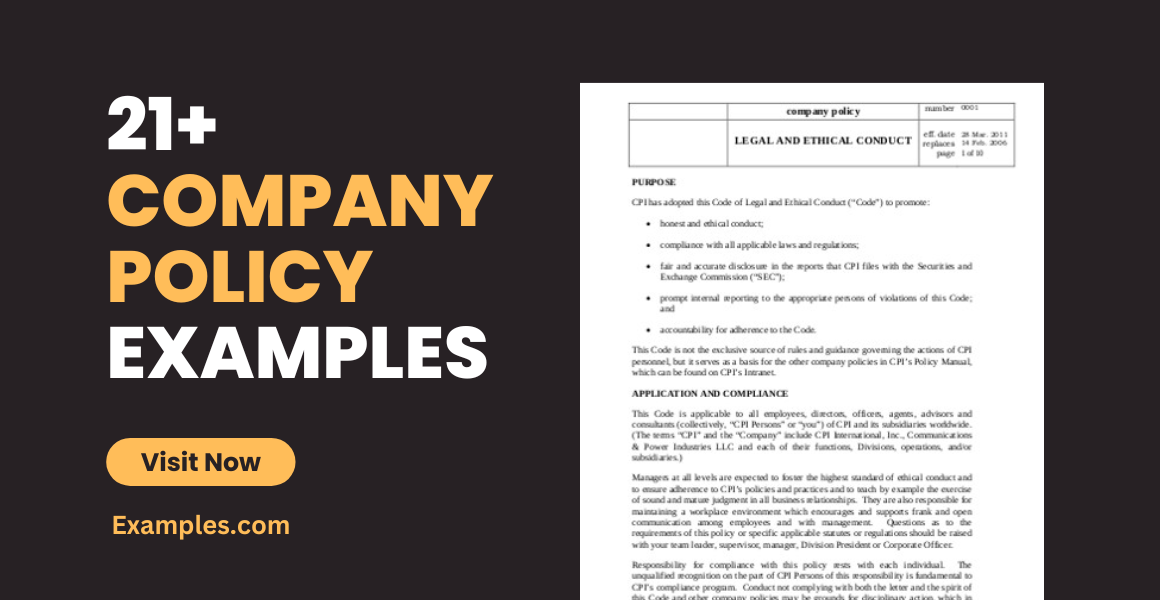
Every business, organization, and company needs its own set of rules to keep everything in order. Without order, not only will there be chaos, but nobody will get anything done. They’d be out of business sooner than anybody thinks. So where do these rules and policies come in? Well, the executives must establish the company policy at the outset so that everybody knows what to expect. To learn more about this and to get the best company policy example from our list, all you have to do is scroll on.
Company Policy Examples & Templates
1. Company Policy Template
Details
File Format
Google Docs
Word
Pages
Size: A4 & US
2. Company Overtime Policy
Details
File Format
Google Docs
Word
Pages
Size: A4 & US
3. Warning Letter for Violation of Company Policy Template
Details
File Format
MS Word
Google Docs
Size: 67 KB
4. Company Policy Memo Template
Details
File Format
MS Word
Google Docs
Apple Pages
PDF
Size: 41 KB
5. Cleaning Company Policy Template
Details
File Format
MS Word
Google Docs
PDF
Size: 20 KB
6. Cleaning Company Employee Policy Template
Details
File Format
MS Word
Google Docs
PDF
Size: 24 KB
7. Simple Company Freelance Policy Template
Details
File Format
MS Word
Google Docs
PDF
Size: 30 KB
8. Company Cyber Security Policy Template
Details
File Format
MS Word
Google Docs
Apple Pages
PDF
Size: 106 KB
9. IT and Software Company Work from Home Policy Template
Details
File Format
MS Word
Google Docs
PDF
Size: 31 KB
10. Company Policies and Procedures
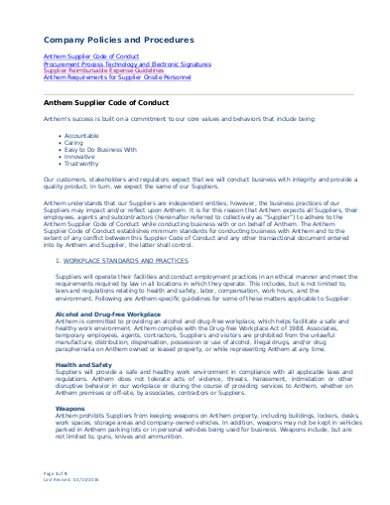
antheminc.com
Details
File Format
PDF
Size: 107 KB
11. Company Policy Example
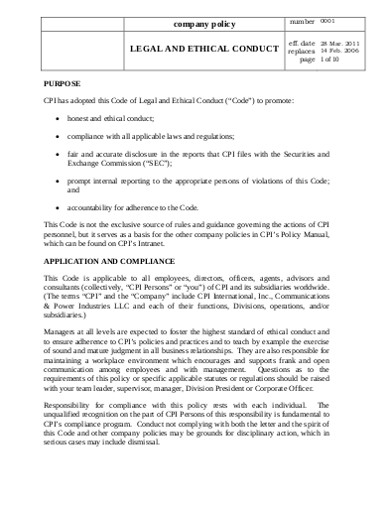
cpii.com
Details
File Format
PDF
Size: 59 KB
12. Company Information Technology Policy
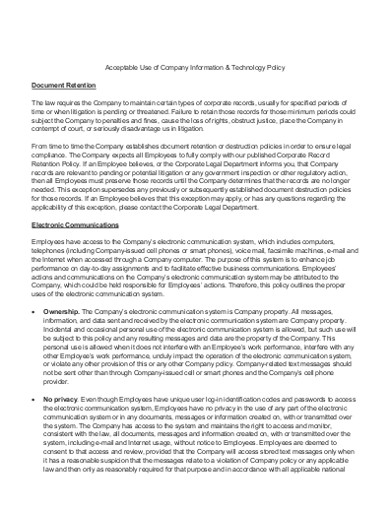
sensient.com
Details
File Format
PDF
Size: 99 KB
13. Security Company Policy
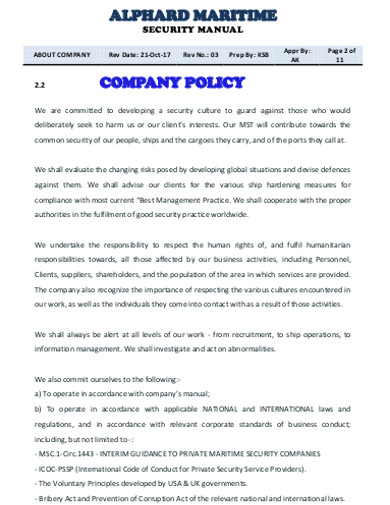
alphardmaritime.com
Details
File Format
PDF
Size: 545 KB
14. Company Policy Travel
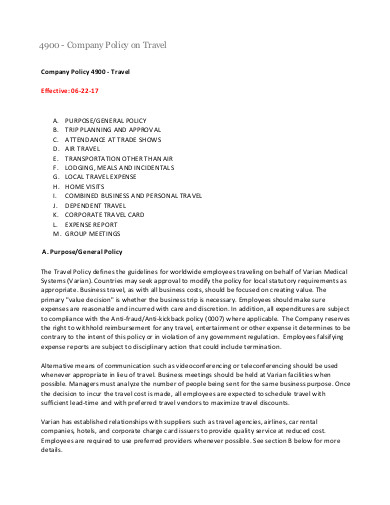
varian.com
Details
File Format
PDF
Size: 377 KB
15. Company Whistleblower Policy
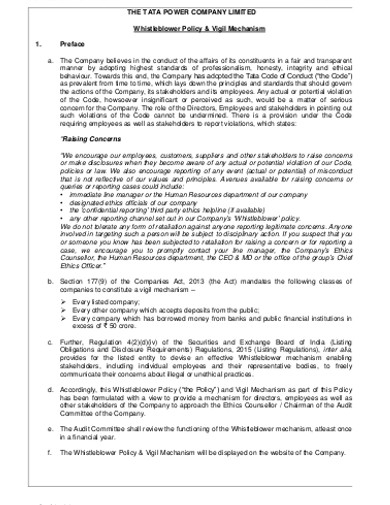
tatapower.com
Details
File Format
PDF
Size: 189 KB
16. Employee Company Policy
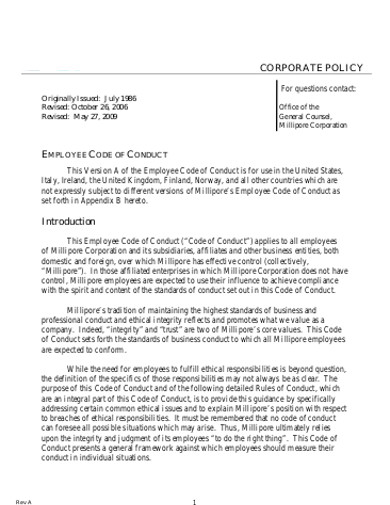
finance.uw.edu
Details
File Format
PDF
Size: 72 KB
17. Company Policy Sample
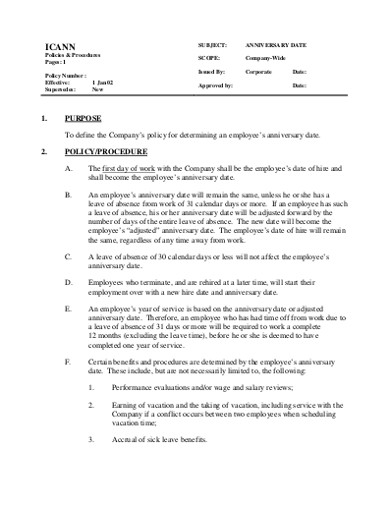
icann.org
Details
File Format
PDF
Size: 190 KB
18. Company Seat Belt Use Policy
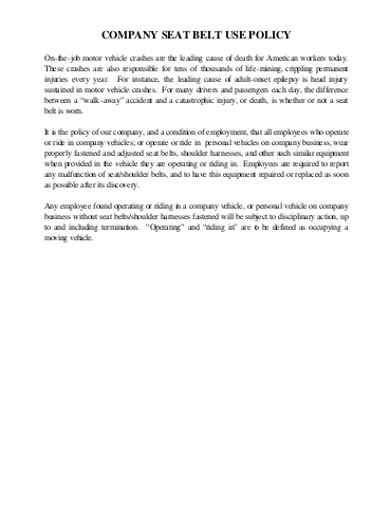
amtrustfinancial.com
Details
File Format
PDF
Size: 3 KB
19. Company Equipment Sample Policy

agc.org
Details
File Format
PDF
Size: 12 KB
20. Company Policy on Strategic Export Controls

rolls-royce.com
Details
File Format
PDF
Size: 190 KB
21. Business Conduct Company Policy
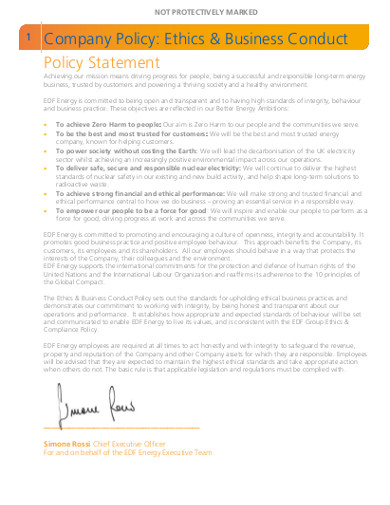
edfenergy.com
Details
File Format
PDF
Size: 227 KB
22. Corporate Company Gift Policy
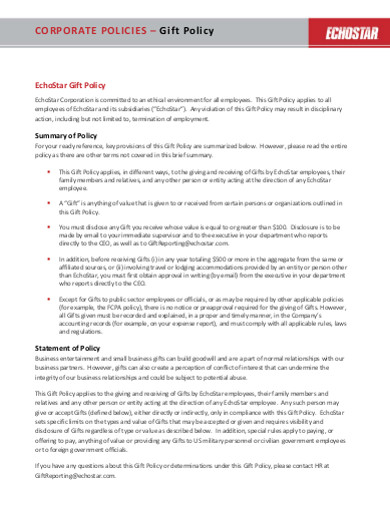
echostar.com
Details
File Format
PDF
Size: 156 KB
What Is a Company Policy?
This is what management sets in place for the establishment of proper rules of conduct. Not only does this handle behavioral topics, but it can also outline the numerous responsibilities of the people within the organization. The specifics tend to range anywhere between employee conduct, dress code, attendance, and areas pertaining to company privacy policy. Now that you know how important this is, it’s time to turn our focus on how to write a company policy.
Tips for Writing a Company Policy?
Writing a company policy can be tedious work. There are so many things to keep in mind and it is easy to lose track of important work matters. To make the experience easier, be sure to consider the following tips:
Tip 1: Have a Priority List
You could have a desperate need for a company social media policy right now. However, working on one will mean skipping over other important policies. So which do you do first? With a checklist on hand, you don’t have to ask yourself this question so frequently. You will also keep your efforts much more organized and efficient.
Tip 2: Use Consistent and Professional Fonts
Your policy is part of your organization and must be presented in a professional manner. As you write, you need to ensure that your use of fonts is consistent. Don’t pick one that makes your policy look anything other than professional either. Do this across the board and your employees should pick up the tone that you are going for with no issues.
Tip 3: Utilize Little or No Colors
Like the tip above, this has everything to do with professionalism. You may feel tempted to brighten up your company policy, but take note that this isn’t the time for that. Should you decide to make use of colors, remember to use very little. This is a business-related endeavor and does not require an artist’s touch.
Tip 4: Be Clear and Concise
Your policy is meant to be understood with little or no issues whatsoever. For that reason, you must be clear regarding your wording. However, that does not excuse you from writing lengthy statements in an attempt to explain everything. Doing so will serve to confuse people even more since it would no longer be very readable. So for that particular reason, be as concise as possible.
FAQs
What are the advantages of having a company policy?
The first advantage is that policies are usually incredibly specific and strict, which leaves no room for error or ambiguity. It also helps encourage employee accountability, which makes for responsible staff members. For others, it can double as a training manual of sorts.
What are the disadvantages of having a company policy?
Depending on the policy, there may be examples where the interpretation is up to the reader. Such policies may end up being causes of conflict rather than peace within the company. Another disadvantage is that it may not allow for any creative thinking within the organization. Also, there’s the added caveat of the policy requiring regular updates, which can be a bit of a hassle.
How does a policy differ from a procedure?
To keep things simple, policies are what you ought to do or should be done. The procedure, on the other hand, is a description of how you are to do it.
Having a company policy and procedures is among the wisest decisions any business owner can come up with. That way, people know what to do, where to go, and what to avoid. Regardless of where your company policy for employees is posted—be it in a company policy manual or any other place—know that you’re now in a much better position to make your own. Take what you’ve learned here and apply it today in the name of your company’s best interests!


